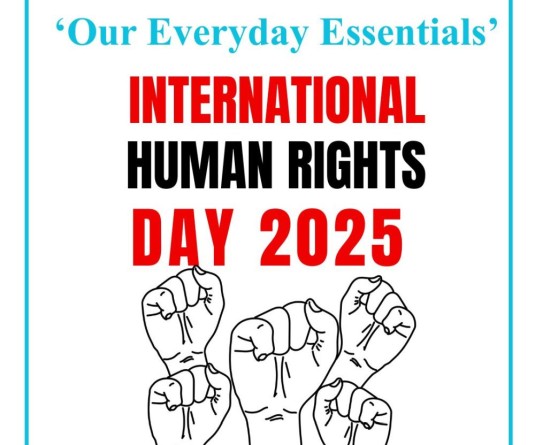
Chizokho Vero
Kohima | August 27
Commissioner Secretary, Health & Family Welfare Menukhol John, at the launching of the Global Fund Round 9 Programme in Nagaland yesterday, August 26 last said that the department will provide all the necessary technical and other support to make the programme a success.
“We are serious in partnering with EHA, CHAI and other stakeholders in fighting TB in the state and will provide any kind of support to achieve this,” he said. Lauding the state health department for its achievement in TB treatment, thereby putting the state among the five best performing states in the country he said, “Let Nagaland be the best performing state in the TB program.”
Dr Sweyievisa John said that since the government cannot do alone, he said the involvement of civil societies would go a long way in tackling TB in the state. He hoped the launching of Global Fund Round 9 Programme would reduce the stigma and universal access to TB care. He said the endeavor of civil societies will yield greater result in control of TB in the state.
The Emmanuel Hospital Association (EHA) and the Catholic Health Association of India (CHAI) will implement the programme in Nagaland. EHA will cover Phek, Wokha, and Zunheboto districts, CHAI will take care of Mokokchung, Mon and Tuensang over a period of five years starting August 2010.
Seeking cooperation from civil society organisations and other stakeholders, Dr. Mathew Santhosh Thomas, Executive Director, EHA, said, “We believe that greater involvement of the community in decision making and implementation of the programme will lead to early diagnosis and treatment of TB in Nagaland”.
Under the Revised National TB Control Programme (RNTCP) 21,205 patients are being treated through 43 Designated Microscopy Centres (DMC) and around 600 Direct Observation Treatment (DOT) centres in the state and 5,683 patients have been cured so far.
With a TB case detection rate of 90 percent and cure rate of 91 percent the RNTCP programme in Nagaland has surpassed the national case detection rate of 70 percent and national cure rate target of 85 percent.
Speaking at the function Dr. K.T. Lotha, State TB Officer, said that involvement of civil society organisations is critical in reaching out to people in far flung areas of the state. “Involvement of civil society will strengthen the programme in reaching out to people and providing quality service to all will become a reality under this partnership”.
The programme will support India’s Revised National Tuberculosis Control Programme (RNTCP) to expand its reach, visibility and effectiveness, and to engage community-based providers to improve TB services, especially for women, children, marginalised, vulnerable and TB-HIV co-infected populations, by 2015.
Besides a host of emerging drug-resistant forms of TB (DR-TB) the issue of TB-HIV co-infection and the TB-tobacco nexus need to be addressed by improving access to complete treatment and building awareness across the state- an area where the need for partnership between government, civil society organisations, NGOs and the media becomes apparent.
The civil society will play the unique role of strengthening the engagement of non-programme providers and communities including the community-based ASHAs (Accredited Social Health Activists) and private providers in RNTCP, complementing human resource development, improving access to diagnosis and treatment, increasing commitment to fighting DR-TB and TB-HIV from all levels, and developing cultural sensitive strategies for building awareness. This will insure improved service delivery in more than 200 underperforming districts and difficult areas like the north-east.
The project hopes to broaden the scope of civil society involvement in TB services through an enduring National Partnership to link RNTCP to other stakeholders through national and state coordination committees.
India bears 21% of the global burden of incident TB cases and has the highest estimated incidence of MDR-TB which is 131,000 out of the global incidence of about 500,000 in 2007. Extensively Drug Resistant TB (XDR-TB) has also been reported from India. HIV prevalence among TB patients is reported to be 4.85 percent. India’s RNTCP, based on DOTS strategy, is being implemented through general health system of the states under the umbrella of National Rural Health mission (NRHM).
The GFATM-9 programme is intended to decrease illness and death due to TB in India and improve access to quality TB care and control services through enhanced civil society participation.
This will be achieved by establishing and enhancing the quality of rapid diagnosis of DR-TB in 43 Culture and DST laboratories in India by 2015, scale-up care and management of DR-TB by initiating treatment of 55,350 additional cases of DR-TB by 2015, improve the reach, visibility and effectiveness of RNTCP through civil society support in 374 districts across 23 states by 2015, and engage communities and community-based care providers in 374 districts across 23 states by 2015 to improve TB care and control, especially for marginalized and vulnerable populations including TB-HIV patients.
Dr. Subash Yadav from The International; Union Against Tuberculosis and Lung Disease (The Union) also spoke at the launching service, held at Hotel Japfu, Kohima. The programme was chaired by Dr. Viu Meru.
The goal of Global Fund Round 9 Programme is to decrease morbidity and mortality due to drug resistant TB (DR-TB) in India and improve access to quality TB care and control services through enhanced civil society participation.
The objectives of the programme includes establish and enhance capacity for quality assured rapid diagnosis of DR-TB in 43 Culture and DST laboratories in India by 2015, scale-up care and management of DR-TB in 35 states/Union Territories of India resulting in the initiation of treatment of 55,350 additional cases of Drug Resistant TB (DR-TB) by 2015, to improve the reach, visibility and effectiveness of RNTCP through civil society support in 374 districts across 23 states by 2015, engage communities and community-based care providers in 374 districts across 23 states by 2015 to improve TB care and control, especially for marginalized and vulnerable populations including TB/HIV patients



.jpg)


